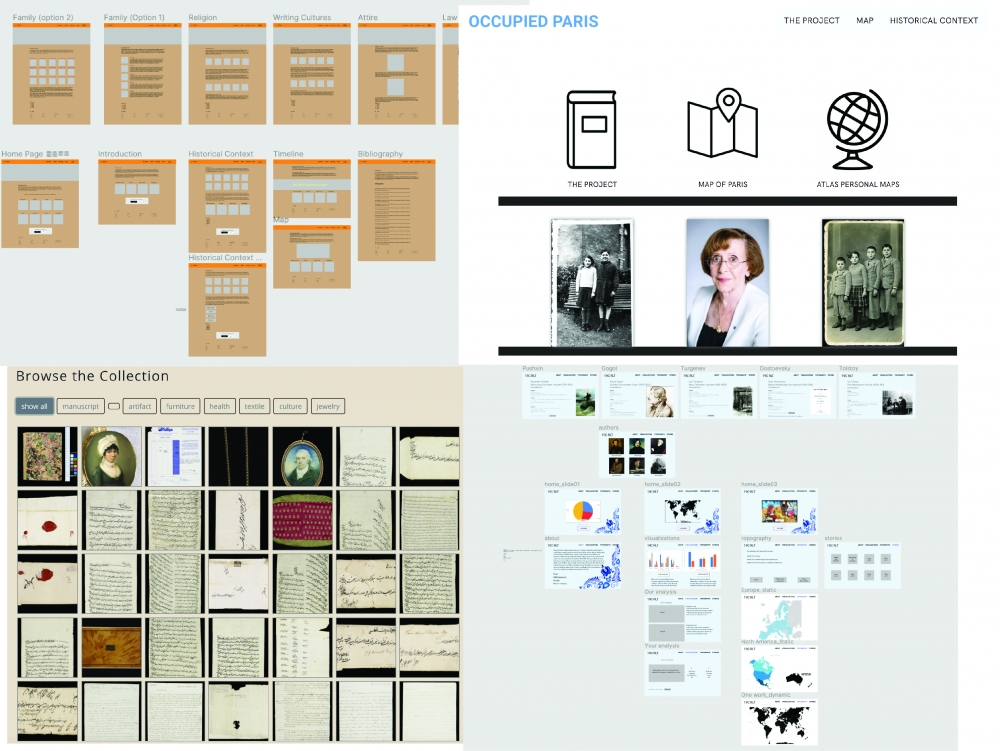This summer, students and scholars from different disciplines gathered over Zoom to learn and work together on six digital humanities projects that are being supported by the Price Lab and Penn Libraries. Together, they built a participatory space that took the projects from proposals to visual designs, to data structures and analysis, and eventually to programmed digital projects ready to be hosted on the web.
Unlike previous “bootcamp” style trainings, this year’s cohort met twice a week over the course of two months, and honed in on developing projects as an exercise in design. The arc of the meetings’ topics went as follows:
- What is code, and what is the internet?
- User experience/user interface design, + accessibility
- Data structures + analysis
- Mapping + information design
- Front end + static site development
The design-first focus of the cohort allowed participants to develop a relationship not only with the subject matter of the projects, but also with the craftsmanship that comes with working on a digital project. Building a project from scratch to reflect a design and a vision is an expressive art, and can be equally as powerful as the prose humanists use to write about their work. Cassidy Holahan, PhD Candidate in the English Department and one of the developers working on the Occupied Paris project, noted that building from scratch was a valuable learning experience that digital humanists don’t always get to have:
I have usually created sites by working from someone else’s design presets, and then tweaking that design (a lot or a little) to fit my own needs and to make it unique — whether that was building out from a Jekyll ‘theme’ or working within a CMS [content management system]. So it was really eye-opening to look at design first, and then build from there-- it made me realize how much easier it is to code when you have a specific design in mind.
The process of working from wireframes and prototypes proved to be both practical for the projects and an important learning experience for the group. Max Dugan, who was working with fellow Religious Studies doctoral candidate Hallie Swanson on a project called Unstable Archives, noted that:
the focus on design and user experience in your workshops in particular got me thinking about the aesthetics of experience in a new light. Sensory experience was already on my mind--I read and write about media, aesthetics, and affects all the time for doctoral work--but being on the production side of things offered a different kind of embodiment through which to learn about design. Putting Figma drawings on screen, receiving feedback from others (and learning about the way they see those designs), and redesigning them accordingly got me thinking about the nuts and bolts of that process.
From a pedagogical perspective, perhaps the biggest lesson is to create a supportive space, both practically and affectively, for failure. As Dugan observes, designing is “redesigning” - an iterative process of prototyping, testing for functionality + feedback, and re-making. The design process can only occur through a series of creative and interesting failures - and, when done in a supportive environment, this is also an amazing way for us to learn together! As Pauline Carbonnel (PhD candidate in French + Francophone Studies) who worked this summer on a mapping site project called Mutinous Women, observed, “we might think we are very bad at it at first, but we learn by practicing and debugging… I made very quick progress the minute I started working on the website on my own, encountering difficulties, doing things all over again.”
